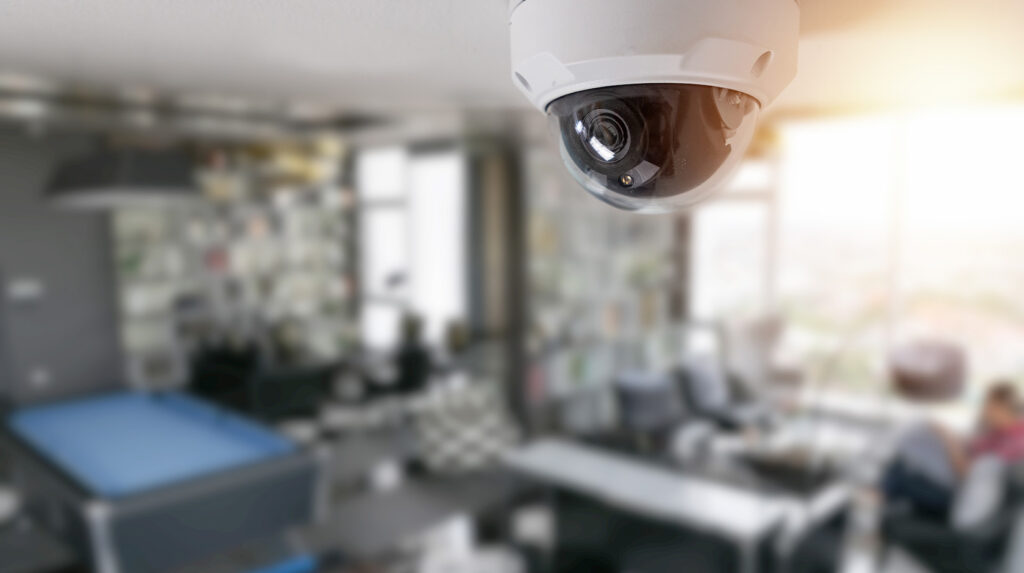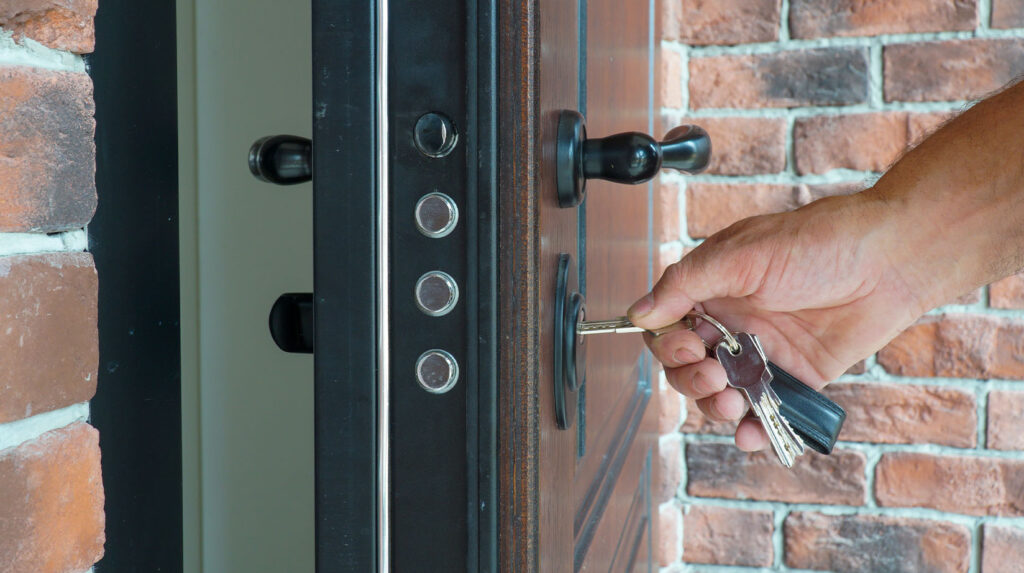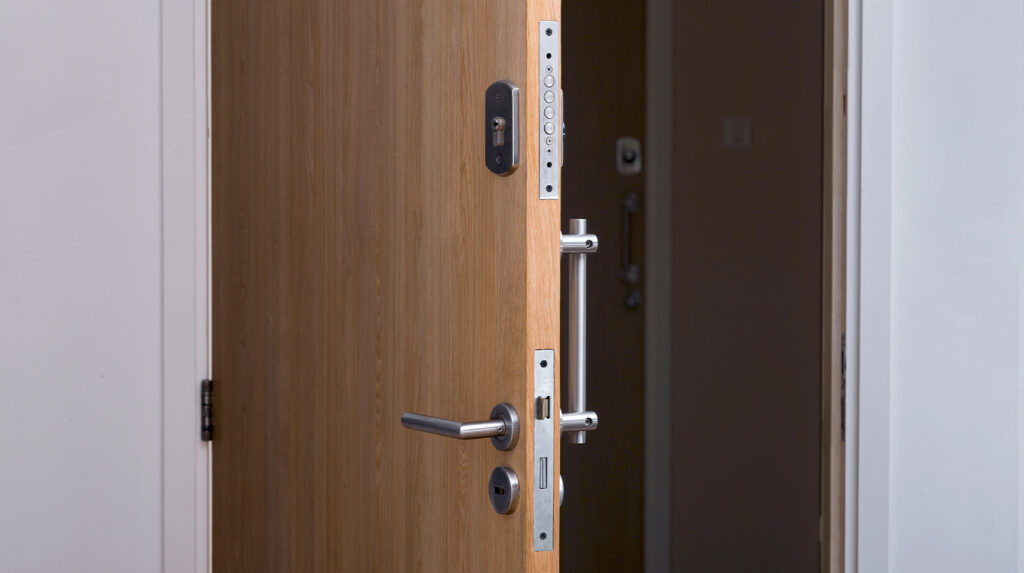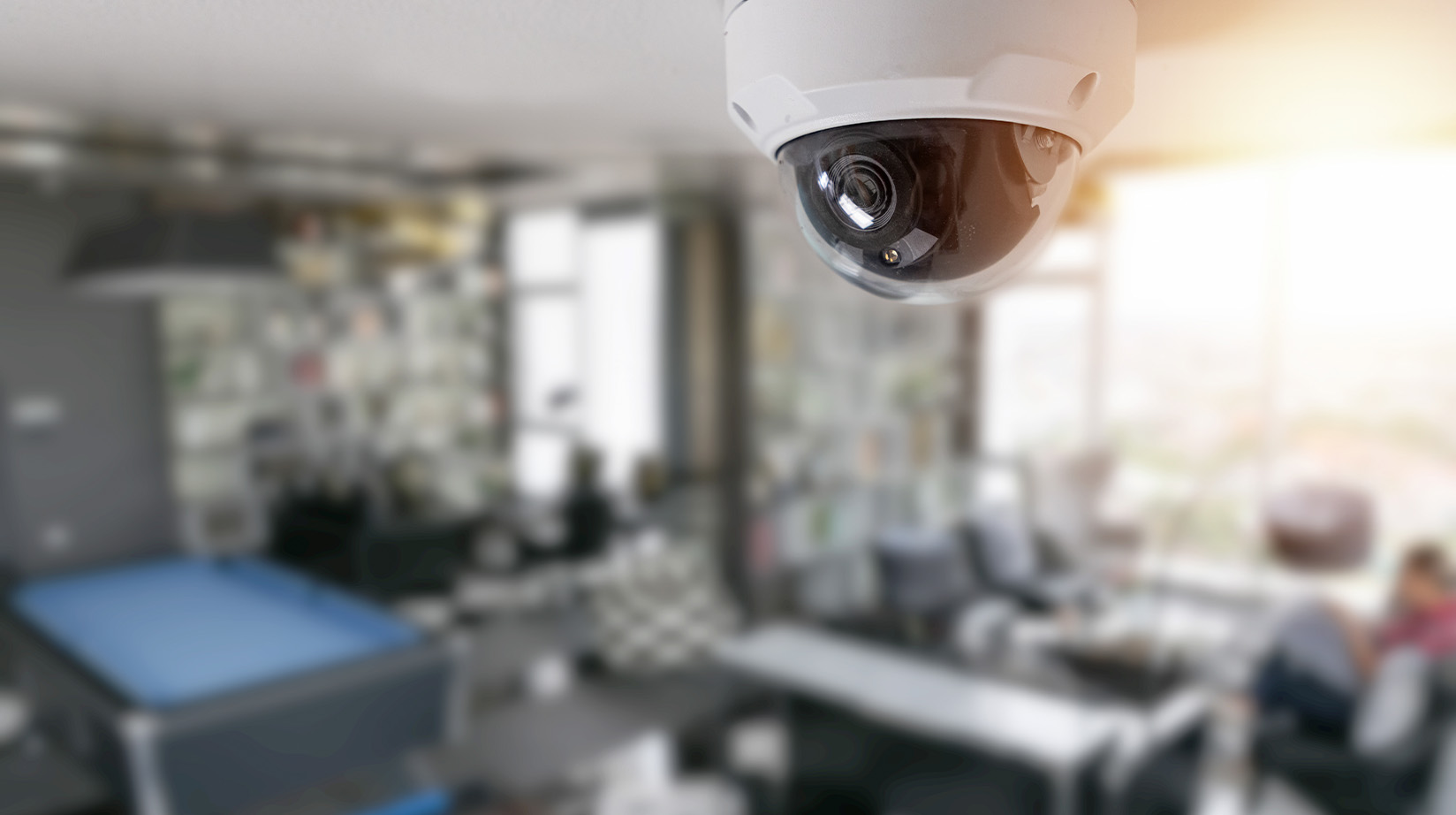Focus Your Efforts on Hardware and Structural Fortification
If a burglar, kidnapper, or home invasion robbing crew targeted your home, it would be good if your home were a hard target, like a castle or fortress of the ancient days, but the reasonableness of your security measures must take into account the likelihood and severity of the risks you might face. Let’s go over some ways to make your home more secure, focusing on hardware and structural changes, not skills or techniques to learn.
Most people have already considered moderately-effective security improvements such as getting an alarm system, installing deadbolt locks on exterior doors, installing exterior lighting all around your home, trimming trees and shrubs around windows, and getting a dog. Almost everybody reading this article will already own one or more “home defense” firearms. These are all good steps, but so much more can be done.
For the purposes of this article, let us acknowledge that unless your home is built from the foundation up as a fortress, you cannot expect any security measures to stop a determined team of burglars willing to take some time and make noise to get inside. If they come when you are home, your security precautions can give you a warning so that you can put your defensive plan into effect. If you are not home, your alarm and other security measures could give cops or neighbors time to respond.
First Objective: Know They’re Coming

In order to defend your home and/or quickly send other people to defend your home in your absence, the first thing you need to know is that an attack on your home is beginning. It would be desirable to see the arrival of the criminals on your property.
For this, you want windows or cameras looking into your yard from every direction– the street, the sides, and the back yard.
Windows and Cameras
Every side of your home should have windows from which you can see. Upper floor windows make for safer viewing and are less vulnerable to being entry points for intruders. Windows are also potential defensive positions for you and your family to try to drive off or repel the attackers.
Virtually all security-sensitive businesses, government offices, and the homes of VIPs have a camera surveillance system as part of the security plan. Today’s security cameras often come with infrared lights to work—with limited range—even in total darkness.
We would all be safer if we had them for our homes. A peephole can be more useful than a window sometimes. All your exterior doors should have one-way peepholes in them, preferably with wide-angle lenses so you can see people standing to the side of the door.
Exterior Lighting
Motion detector-activated lighting is important, as are floodlights that you can also turn on with a switch. They should be positioned to shine away from your home so that you can see without getting any glare and without the lights making you visible from the outside.
If one side of your home has no windows, consider mounting a camera. Studies show that good lighting of your home and yard at night is one of the most cost-effective methods of home security.
Perimeter Motion Detectors
Most home alarm systems will accommodate this kind of addition, but most homeowners do not upgrade to this level. Perimeter detection can be either of two popular types: wide area motion detectors or beam-break detectors. Both kinds are available with two underlying technologies: passive infrared light and microwave signals.
Perimeter warning units mount outdoors around your home and yard, on posts, tree trunks, or the side of your home. Wide area motion detectors will alert a human or large animal’s movement in your yard within a cone-shaped zone.
Beam-break type detectors come in sets of two units; one projects a beam toward the other, and the line between the sending unit and receiving/reflecting unit is the “beam” that is being monitored. If anything crosses that line, its body will temporarily block the beam of infrared light, and the alarm is triggered.
The more common models that you might buy at a big box home improvement store use IR light, and they have a range of about 50-75 feet. The commercial models used by businesses are more expensive but reach out to over 300 feet.
Perimeter alarm systems work best with physical barriers around your property, such as fences and a gate across your driveway, to slow the approach of unwelcome vehicles. These barriers serve to give you more of a warning, as the criminal’s approach will be slower and noisier.
Second Objective: Block Their Entry

If criminals attack your home, you want them to find all your doors and windows closed and locked. They may try to break through one of these points of entry, probably, where they cannot be seen from the street or may not be visible to the neighbors.
You want your doors to resist being pried open or kicked in. Here is how you can make your exterior doors stronger:
Strong Exterior Doors
Not all entries are equal when it comes to construction. Some are thin molded plastic glued to a wooden frame. Others have steel sheet metal over a wooden frame. Wood is weaker than fiberglass and undesirable in a high-security door.
Even solid wood doors, though strong across the middle, are weak where they are drilled out for the lock components. Commercial fire-rated steel doors are stronger than ones made for residential applications, but they’re a lot more expensive.
Choose a door that does not have windows in it, especially if that glass is located close enough to the lock mechanism that a criminal could smash the glass and reach through to the lock.
The weakest link of the door is where it has been hollowed out for the lock sets– the door material here is pencil-thin and easy to rip away from the metal lock components.
High-Security Locks and Door-Mounting Hardware.
A standard exterior door lock has a short bolt that only engages a tiny bit into a recess in the door frame. A deadbolt mounted several inches above the standard doorknob gives you a second bolt with a much longer range of motion; it will often reach over an inch into the door frame.
Make sure the fit of the door to the door frame and the strike plate is good, with a very small gap. Many locking doors have a lockset that is supposed to prevent easy opening with a stiff plastic like a driver’s license, but in the real world, sloppy installation or the loosening of the door frame over cause misalignment will allow anybody to “jimmy” the lock.
To address the inherent weakness in doors and door frames due to flimsy and thin wood components that surround the lock parts themselves, buy door security hardware that lets you screw steel reinforcing plates or “wrap-around” over the part of the door that has the lock mechanism.
You can also reinforce your strike plate, which is the rectangular metal piece surrounding the hole in the door frame into which the bolt of the lock will enter.
In addition to bolting steel plates to your door around the lock mechanism, as reinforcements to the door itself, you should use bigger, longer screws in and around your door. Replace the short, skinny nails and screws that your door was installed with. Use deck screws, which come in lengths of over 3.5 inches.
Augment Your Door’s Locks With an External Bar
Remember, no matter how good your door’s locks are, the bolts can be cut with modern cordless power tools. Criminals have used such battery-powered tools to cut chains and locks. Another way to prevent a door from being forced open is to use a locking bar propped against the door at a 45-degree angle.
Some such bars require a slot or stud hole in your floor, but others use a rubber-coated end and friction to prop the bar.
Reinforce Your Windows
As for windows, the most obvious problem is that a criminal can break the glass, reach in, unlock the window sash, open the window, and climb in. To make your windows stronger, consider putting up another layer of barrier in addition to the glass panes.
Some people use rigid panes or sheets of clear plastic, and this is good if the type of plastic is polycarbonate, such as the Lexan brand. Do not use cheap acrylic plastic; it is not particularly strong nor shatter-resistant.
There are also “security film” window treatments on the market. They are tough but flexible wraps of clear (or tinted) plastic that apply to glass doors and windows just as one would apply tint film to car windows.
This security film will hold the window together even when the glass underneath is broken. It is tough enough and energy-absorbing enough that it can’t easily be ripped away to create a big opening for an intruder to climb through.
However, a window’s sashes or frame can be smashed-through, just like a door. That’s why some people in high crime areas fortify their windows (and sometimes doors) with burglar bars. These bars cover the entire window opening with a cage or screen.
They are much less attractive than clear plastic. Although they look “ghetto,” they are high security. One risk that comes from covering your windows with burglar bars is that it will often prevent the window from opening.
You should consider whether you might need to use that window for ventilation or an emergency escape, such as in the case of a fire. Some burglar bar sets have a quick-release system, accessible only from the inside of the home.
Third Objective: Have Hard Cover in Your Home

If intruders make it through your doors and windows and get into your home while you and your family are there, one or more of you may want to fight off the intruders, while others escape, either by leaving home or locking themselves in a safe room.
Safe Room
A safe room is a place inside your home to stay out of sight and out of reach of intruders, even if that means they can steal anything they want from the rest of your home. It should be a room that is very hard to break into and one that is equipped for you to comfortably stay there for a long time.
The door to the safe room should be an exterior-grade door or a fire-rated door suitable for commercial construction. It should have good locks and lock-reinforcing hardware installed, as described previously in this article. The door should have a one-way, wide-angle peephole.
If you are building or remodeling your home, make the walls of one of the smaller rooms in your home (a guest bedroom, big bathroom, or a large walk-in closet) extra strong for future use as a safe room.
For this room, you may want to put a steel mesh screen across the studs before you enclose them with sheetrock (drywall). A good type of screen for this purpose is “remesh,” made for reinforcing poured concrete driveways.
You may want to have the studs placed at 8” center to center instead of the normal 16” spacing, to make it impossible for an intruder to rip through the flimsy sheetrock and step into that room by passing his body in between the 2×4 studs. Or you could use sheets of plywood to cover those walls first, and then use drywall.
The safe room should also have weapons to deal with the intruders should they manage to break into that room. You should also have an axe and pry bar in that room so that you can break OUT of it, if necessary if for some reason that strong door was blocked, or its lock jammed so that you could not open it.
Consider What Is “Cover” Inside Your Home
If you had to grab a gun and fight intruders, would it be to your advantage to position yourself behind a bullet-resistant cover? Of course, it would. Every tactical shooting course and instructor on the topic of combat arms shows you how to make use of cover while engaging your adversary.
Inside your home, think of what you have or could what would serve as cover. Keep in mind that cover is not the same as concealment. Concealment just hides you from sight. Doors are concealment.
Even the interior walls of your home only “conceal” you from the bad guys, but interior walls will not stop incoming bullets. The cover is defined as something that effectively blocks or deflects bullets.
With your knowledge of the layout of your home, you should anticipate the likely point of entry for intruders, and you should choose a few defensive positions in your home. Don’t count on the corners of walls or doorways as reliable cover.
All popular handgun and rifle bullets, as well as buckshot or slugs from a shotgun, will go right through interior walls easily, with lethal velocity as they emerge on the other side. The only parts of an interior wall that can stop or significantly slow down handgun bullets are the wooden wall studs– and there is only one stud per 16 inches of wall length in most walls.
If the bullet hits any of the other 15 inches along that section of wall, it encounters only a couple of layers of drywall. Bullets go through drywall like a knife through butter.
A bookcase whose shelves are filled with books and other paperwork can stop bullets. A refrigerator full of food and beverages will stop handgun bullets and buckshot from a shotgun, and some small, high-velocity rifle bullets.
The same applies to ovens, washers, and dryers– consider them “cover” as to most common handguns, but not for rifle rounds. Furniture is no good as a cover. Wooden chairs and tables don’t usually stop even pistol bullets, and upholstered furniture like sofas and reclining chairs are only “concealment” if you duck behind them, not cover.
Your bedroom dresser, with the drawers full of clothes, makes a better cover than the mattress and box spring of your bed.
Conclusion
In times of peace and relative safety, certain security measures are more “worth it” than others. It all depends on the risks you and your home face and how much peace of mind you would attain from having a fortified home with a good security system.
Because conditions in our society could change rapidly, it may not be unreasonable to beef up your home now when you have easy access to all the hardware at the local shopping center.
In times of trouble, the roads may be more hazardous for travel, and the hardware and home supply stores could be closed or sold out of the products you need. It’s better to prepare now.



